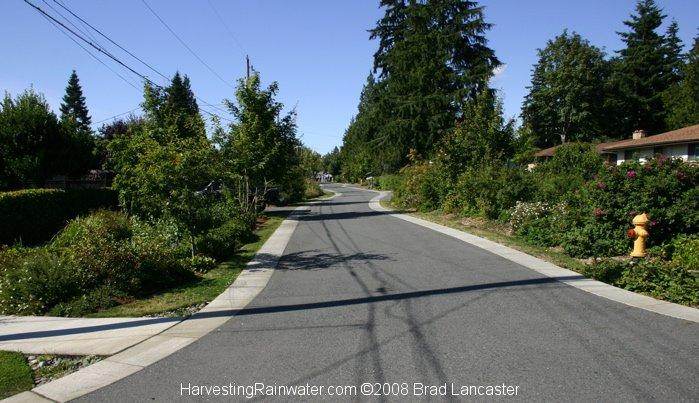

















Paul Cereghino- Ecosystem Guild
Maritime Temperate Coniferous Rainforest - Mild Wet Winter, Dry Summer





Subtropical desert (Köppen: BWh)
Elevation: 1090 ft Annual rainfall: 7"








Subtropical desert (Köppen: BWh)
Elevation: 1090 ft Annual rainfall: 7"
















Tom OHern wrote:I live in Seattle and I've never felt that swales would be useful for me. The reason being that I never have any water runoff, even in the heaviest winter rains, so there is no need to try and restrict the flow of water. It all soaks into the soil already. During the dry months, I only need to dig 2 or three feet down to find moist soil, so once trees are established, they should not need any water. Instead of swales, I use hugelkulture mounds to make sure that shallow rooted annuals have access to moist soil year round. I do employ rain barrels for watering new trees and my vegetable beds. I let them drain out each fall (to avoid the possibility of freezing damage) and only fill them back up starting in March/April once the chance of hard frosts are gone. For my urban garden, I only need about 250 gallons to get through the dry summer months.
Subtropical desert (Köppen: BWh)
Elevation: 1090 ft Annual rainfall: 7"




Jennifer Wadsworth wrote:The difference is climate, climate, climate! What is appropriate for one climate might be abysmal for another. You live in a HUMID climate - therefore swales might not be the best technology to employ. On the other hand hugelkultur would be awesome there.
Using aboveground hugelkultur in the hot desert (dryland) is a bad idea (more surface exposure to EXTREME evaporation, sheds limited water, and so forth). Swales, infiltration basins,- are FANTASTIC for drylands. Another example of a horrible permaculture application in hot, dry deserts are herb spirals - they are the "spirals of death" in Phoenix.
 1
1




Subtropical desert (Köppen: BWh)
Elevation: 1090 ft Annual rainfall: 7"
 1
1













Paul Cereghino- Ecosystem Guild
Maritime Temperate Coniferous Rainforest - Mild Wet Winter, Dry Summer









Paul Cereghino- Ecosystem Guild
Maritime Temperate Coniferous Rainforest - Mild Wet Winter, Dry Summer









Paul Cereghino- Ecosystem Guild
Maritime Temperate Coniferous Rainforest - Mild Wet Winter, Dry Summer









Paul Cereghino- Ecosystem Guild
Maritime Temperate Coniferous Rainforest - Mild Wet Winter, Dry Summer

|
It is an experimental device that will make my mind that most powerful force on earth! More powerful than this tiny ad!
The new permaculture playing cards kickstarter is now live!
https://www.kickstarter.com/projects/paulwheaton/garden-cards
|




